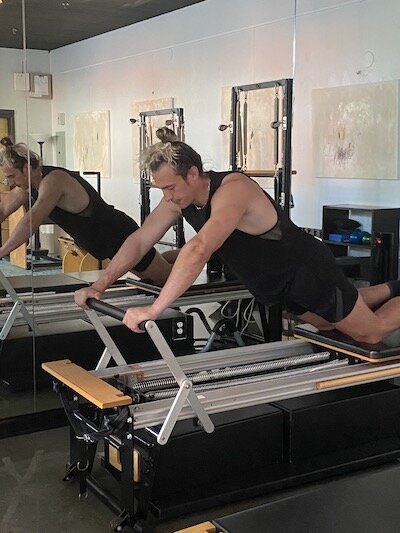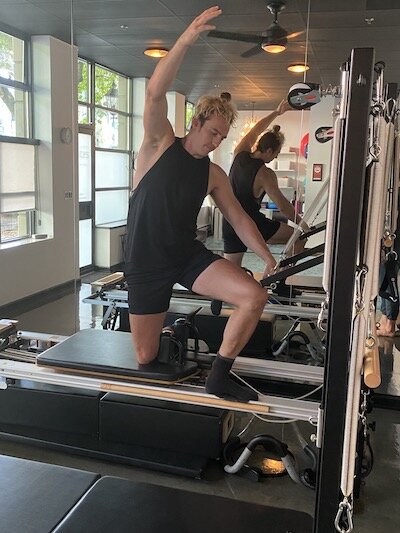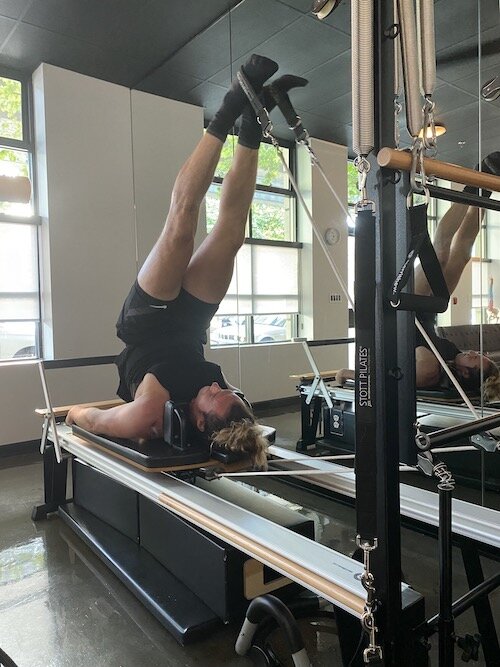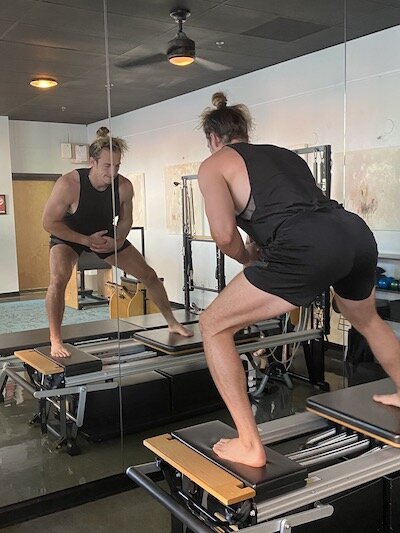Football & Pilates: A Clear Connection
Luke Willson, NFL Football Player working out at Emerald City Pilates
It’s time the sports world realized the compatibility of football and Pilates.
“Football, at all levels, causes lasting damage to athletes’ bodies, which may disable them for the rest of their lives. While concussions have become well known in football, the damage to the rest of the football player’s body has largely remained a secret,” states orthopedic surgeon Benjamin Dom. That damage often comes in the form of joint injuries, specifically to the hips and back, that make it harder for athletes to function throughout their careers and after their days of competition are over, leaving their physical distress to serve as a bitter daily reminder of their glory days. However, with Pilates as a staple in their training regimens, athletes greatly increase their chances of remembering their time on the field with pleasure, minus the pain.
Pilates, which is comprised of specific equipment and utilizes over 600 exercises and variations, aims to strengthen the core and increase mobility in the joints. While the practice is beneficial for anyone at any stage of fitness, it also serves as an effective means of rehabilitation from injuries and prehab, or preventative measures, before injuries have a chance to occur. The speed and force that is so characteristic of football, coupled with the sheer hours of training repetitive motions, serve as risk factors for these athletes. For this reason, when coaches include Pilates as a training measure, they demonstrate a high measure of proactivity in injury prevention. Additionally, they improve flexibility of large muscle groups and train often-overlooked small muscle groups, boosting performance on the field because of better control of the core. Another measurable benefit of the practice is a higher state of mindfulness; since Pilates forces improved concentration through its variety of exercises and complex movements, attempting to engage in the practice on autopilot proves to yield insufficient results.
Not only does Pilates develop flexibility and mindfulness, it also promotes symmetry in the body, which improves balance and makes it less likely for athletes to incur injuries. Muscle imbalances, which are common, force unnatural compensation and throw off the body’s proprioception, increasing the likelihood of muscle tears, pulls, and strains. As a result, athletes get and stay hurt longer, often aggravating the same injuries over and over again. Pilates is a brilliant solution to improving functional mobility, which increases range of motion in the shoulders, hips, abdominals, and buttocks, all of which serve as the backbone of athletes’ performances on the field.
While Pilates is a smart way to prevent injury, accidents can still happen. Because Pilates is safe and gentle on the joints, it is an ideal rehabilitative measure that promotes balance in the musculoskeletal system post-injury. The stress on posture and full-body engagement not only helps to regain post-injury function; it also continually develops healthy movement habits to prevent the same injury from occurring again or encourage new ones. More of an active, inclusive practice than a passive one, Pilates is hard to beat when it comes to calling on various systems in the body to participate in the restoration of full-body health. Because of these qualities, athletes who incorporate Pilates in their training can enjoy longer, healthier careers and limit the chances of lifelong aches and pains brought on by their sport.






